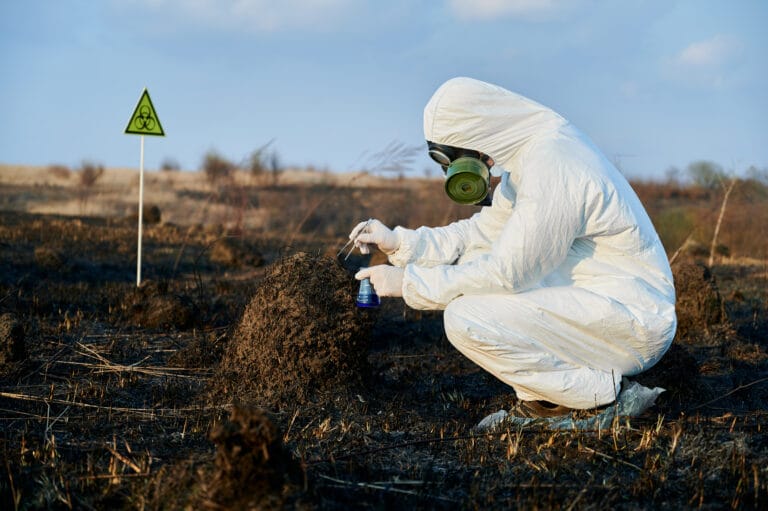
The History and Importance of Pesticide Testing in Agriculture

Natural pesticides have been used since ancient times as a way for humans to harness nature to protect crops from pests. Early civilizations such as those in Egypt and China demonstrated ingenuity in formulating plant-based ingredients into insect repellents. Over time, these traditional methods continued to evolve and laid the foundation for the development of modern pesticides. Although they were once overshadowed by synthetic pesticides, growing concerns about environmental impacts have renewed interest in natural alternatives. This article will explore the historical of natural pesticides, from their traditional roots to their crucial role in today’s sustainable agriculture.
- The Development of Natural Pesticides in the 1900s
- The Development of Natural Pesticides in the 1940s – 1960
- The Development of Natural Pesticides in the 1970s – 2020
The Development of Natural Pesticides in the 1900s
The evolution of natural pesticide use began in the early 1900s, when farmers still relied on traditional plant-based remedies to control pests. This approach reflected generational knowledge passed down over centuries. By the 1920s, scientific advancements enabled the isolation of pyrethrin compounds from chrysanthemum flowers, marking a crucial step in understanding the potential of natural bioactive compounds for more targeted pest control.
In China, chrysanthemums rich in pyrethrins were used to combat crop-damaging pests. Interestingly, this approach remains relevant and is still applied in modern pest management practices. These early techniques can be considered innovative for their time and reflect humanity’s ability to utilize nature in developing sustainable agricultural practices—even without the scientific understanding we have today.
The Development of Natural Pesticides in the 1940s – 1960
As agricultural demands grew during the Industrial Revolution, the limitations of natural pesticide use became increasingly apparent. Extracting bioactive compounds from plants required significant time and labor, while their inconsistent effectiveness posed challenges for large-scale application. This led to the emergence of synthetic pesticides, such as dichlorodiphenyl trichloroethane (DDT), which offered improved pest control in the 1940s.
During World War II, DDT proved to be highly efficient, consistent, and easy to apply in large quantities compared to natural pesticides. However, this shift marked a turning point in agricultural history, as efforts to increase crop yields began to overshadow considerations of ecological impact. The widespread use of synthetic pesticides later brought about numerous consequences. Issues such as toxin accumulation in the food chain (bioaccumulation), environmental pollution, and the emergence of pest resistance became major challenges.
Public awareness of the risks associated with synthetic pesticide use surged following the publication of Silent Spring by Rachel Carson in the 1960s, which highlighted environmental damage caused by synthetic pesticides and sparked policy changes. Although synthetic pesticides brought significant advances to agriculture, their use underscored the need to balance productivity with environmental sustainability.
The Development of Natural Pesticides in the 1970s – 2020s
The 1970s marked a pivotal moment with global recognition of neem as an environmentally friendly and sustainable pesticide. Neem-based pesticides showed promising results under controlled conditions but often lacked consistency when applied directly in the field. Additionally, natural pesticides tend to have a narrow spectrum of activity, requiring combination with other types to effectively target a broader range of pests. These challenges highlighted the need for innovative approaches that could combine the ecological benefits of natural pesticides with the stability and effectiveness of synthetic ones.
The 1980s saw the emergence of the Integrated Pest Management (IPM) concept, which emphasized a balanced use of synthetic and natural methods to minimize environmental impact. In the 1990s, advances in biotechnology ushered in a new era with the introduction of genetically engineered crops capable of producing Bacillus thuringiensis (Bt) toxins, showcasing the integration of bioengineering techniques in pest control. Entering the 2000s, various global policies began to restrict the use of harmful synthetic pesticides, prompting innovation in the development of biopesticides and natural alternatives aligned with sustainability goals.
Throughout the 2010s, biomimetic approaches gained momentum, with scientists designing solutions inspired by nature to enhance the stability and effectiveness of natural pesticides. By the 2020s, technologies such as nanotechnology and advanced formulations successfully optimized natural pesticides, strengthening their role in sustainable agriculture and IPM systems. This historical journey illustrates the transition from traditional practices to modern, sustainable solutions in agricultural pest management.
Read more:
3 Recommended Pesticide Lab Tests to Pass the Ministry of Agriculture’s Distribution Permit!
Conduct pesticide laboratory testing to ensure the effectiveness, safety, and stability of the formulation before application in the field. This testing helps ensure that pesticides do not negatively impact crops, soil, or the surrounding environment.Through analysis of active ingredient content, toxicity, and residues, pesticide quality can be verified according to applicable regulatory standards.
Laboratory testing also plays a crucial role in detecting potential pest resistance to ensure long-term effective control. This step is a crucial foundation for safe and sustainable agricultural practices. Ensure each of your pesticide products undergoes a thorough testing process before being released to the market.
Author: Dherika
Editor: Sabilla Reza
References:
Harun-Ur-Rashid, M., Imran, A.B. (2025). Biomimetic and Synthetic Advances in natural Pesticides: Balancing Efficiency and Environmental Safety. Journal of Chemistry, 2025, 1-23. https://doi.org/10.1155/joch/1510186.
Souto, A. L., Sylvestre, M., Tölke, E. D., Tavares, J. F., Barbosa-Filho, J. M., & Cebrián-Torrejón, G. (2021). Plant-Derived Pesticides as an Alternative to Pest Management and Sustainable Agricultural Production: Prospects, Applications and Challenges. Molecules, 26(16), 4835. https://doi.org/10.3390/molecules26164835.



